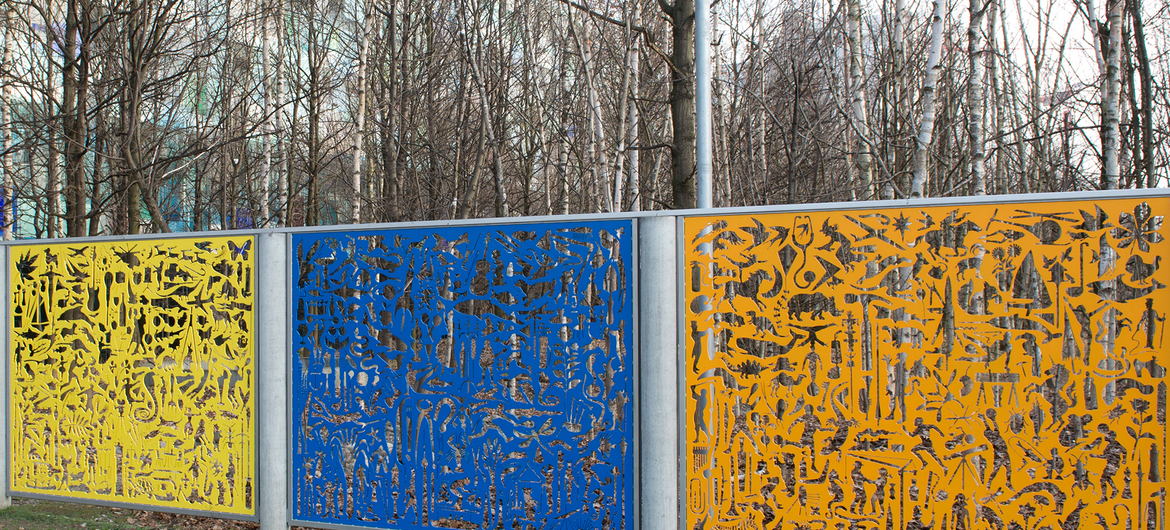Year: 2008
Material/Technique: Five steel panels
The Wonderwall is a stretch of fence, featuring a series of five steel panels elaborately decorated with lyrical motifs. Alan asked British illustrator Andrew Davidson to create over 1000 images inspired by Victorian motif books, each of which was later lasered out of ten-millimeter-thick steel sheet. Looking closely at the panels one can observe a galloping cowboy with an arrow through his hat takes aim at a witch on a broomstick, and both are dwarfed by the silhouette of a large hammer. Scenes like this seem to mingle and move among other motifs, and shift from panel to panel. Fletcher envisioned parents with their children playing with the characters and elaborating stories based on favorite figures and motifs.
Artist
Alan Fletcher, one of the five founders of the design group Pentagram, was born of British parents in Nairobi, Kenya. He studied at the Central School of Arts and Crafts, London 1950-51, the Royal College of Art and received an MFA from Yale University in 1957. Prior to founding Pentagram, Fletcher worked as a typographer in London, a designer for the Container Corporation of America, Fortune Magazine and Time-Life, Inc. in New York. He also was a consultant art-director for Time-Life International in London. In 1972 he cofounded the Pentagram Design Partnership with Theo Crosby, Colin Forbes, Kenneth Grange and Mervyn Kurlansky in New York and London. As a founding partner, Fletcher helped to establish a model of combining commercial partnership with creative independence. In 1992, he left Pentagram to work as a freelance designer. He has also worked as a guest lecturer at Yale University.
Throughout his life, he developed some of the most memorable graphic schemes of the era, notably the identities of Reuters and the Victoria & Albert Museum and made his mark on book design as creative director of the Publishing house Phaidon. He was involved with typography, packaging design, signage, and corporate identity design. At Pentagram, his expertise and commitment to the integration of design and life contributed to the varied projects undertaken by the firm, specifically industrial design, site-specific design and exhibition design.
He played a major role in the development of the Novartis Basel Campus, working as consultant to define the visual identity of the entire project. He designed both two-dimensional material and environmental graphic features.
